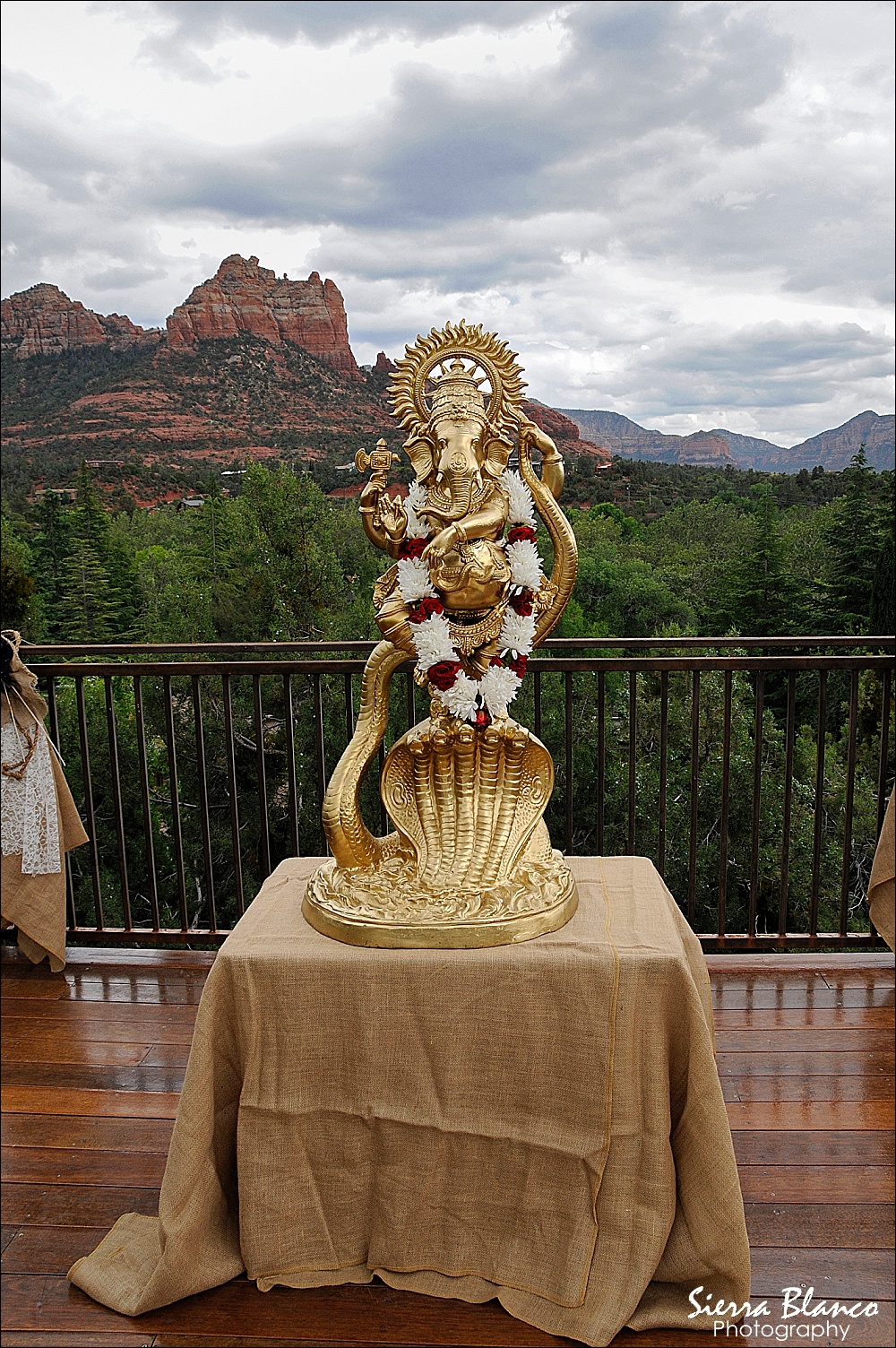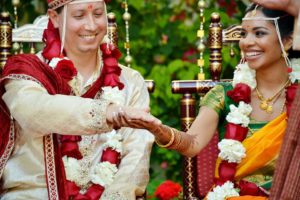The traditional Hindu wedding is a deeply meaningful and symbolic combination of rituals and traditions. Each phase of the ceremony has a significance, philosophical, and spiritual meaning. The ceremeony not only joins the souls of the bride and the groom, but also creates a strong tie between the families. The ceremony is traditionally performed in Sanskrit, which is the language of ancient India.
Pithi
Pithi is held one day prior to the wedding. Each family gathers with close family friends. The women in each family then apply turmeric powder on the body of the couple to promote a healthy glow to the face in preparation for the wedding day.
Sangeet/ Garba
Late in the evening family members gather to perform Garba. Designed as a meet and greet for the families to get to know one another, Garba includes hitting on one another with sticks and hands – a traditional Hindu dance.
Baraat
On the big day, the groom arrives on horseback and is escorted to the wedding stage. The groom’s family members and friends then dance around the him to traditional Indian music – this is known as Baraat. The groom is then blissfully welcomed by bride’s family, while the mother of the bride performs aarti by pulling the groom playfully and grabbing his nose.
Below are a few of the invocations performed during a traditional Hindu ceremony:
Ponkhvu or Swagatam – Welcoming of the Groom
The groom performs a ceremony with the mother of the bride where they crush earthen pots with their feet. A cord is then wrapped around the couple 24 times by the elders in family which begins the meeting of their souls. A scarf wore by the groom is then tied to a scarf worn by the bride. Flower petals and rice grains are then showered on the happy couple during this part of the Gujarati ceremony.
Ganesh Pooja – Devotional Ceremony
The ceremony begins with the worship of Lord Ganesha. Lord Ganesha is remover of all obstacles. After the ceremony, a white curtain (Antar pat) is placed in front of the groom.
Hasta Melap – Joining of the Hands
The couple is united by placing the bride’s right hand onto the groom’s right hand. The ends of the scarves worn by the couple are then tied together signifying unity. The couple vows to remember the Divine; to look upon others with sympathy, love, and compassion; to be strong and righteous, and to show goodwill, respect and affection to each other’s families.
Mangal Fera – Circling the Fire
The couple circles the fire four times, representing four purposes of life: Dharma (spiritual way of living), Artha (wealth), Kama (pleasures), and Maksha (liberation). In the first three circles, the groom leads the bride, as it is traditionally believed that the man leads the family in the attainment of these purposes. The bride leads the final circle, as it is believed that only the woman can lead the family to spiritual transcendence.
Saptapadi – Seven Steps
The couple now walks seven steps in harmony, embracing the following ideals and aspirations in their married life together:
- Together, we will acquire energy to share in the responsibilities of married life;
- Together, we will fill our hearts with strength and courage to accomplish all the needs of our lives;
- Together, we will prosper and share our worldly goods and we will work for the prosperity of our family;
- Together, we will cherish each other in sickness and in health, in happiness and in sorrow;
- Together, we will raise strong and virtuous children;
- Together, we will fill our hearts with great joy, peace, happiness, and spiritual values;
- Together, we will remain lifelong partners.
These are just some of the rituals that transpire during the ceremonies. Some may call one pooja (prayer) differently due to their region origin but all in all, they mean the same, two people becoming one in the eyes of their family, friends and their respective gods.
If you or if you know someone who questions about Hindu weddings, please do not hesitate to contact us at anytime.
photo credits… Sierra Blanco Photography




